Images

© A.A. Seif, A.M. Milena, icipe
|
Anthracnose on mango (Colletotrichum gloeosporioides). Anthracnose initially appears as small black spots. On leaves, the spots can grow to form an irregular patch. On young fruit, pin-sized, brown or black, sunken spots develop. This is a serious post-harvest problem.
|

© A. A. Seif, icipe
|
Anthracnose on avocado fruit. Anthracnose (Colletotrichum gloeosporioides) on avocado fruit. This fungal disease is primarily a post-harvest problem when fruit is at maturity stage.
|
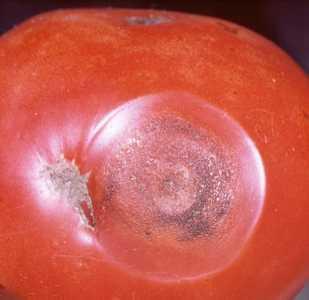
© Courtesy EcoPort (http://www.ecoport.org) : Clemson University - USDA Cooperative Extension Slide Series
|
Anthracnose (Colletotrichum coccodes) on tomato.
|

© Courtesy EcoPort (http://www.ecoport.org): Denis Persley and Tony Cooke, Department of Primary Industries and Fisheries, Queensland, Australia
|
Onion smudge. Small, round, dark blotches develop on bulbs, with a zonate pattern on the outer scale leaves.
|

© Courtesy EcoPort (http://www.ecoport.org): J.W. Sheppard
|
Anthracnose (Colletotrichum lindemuthianum) on dry bean seeds
|
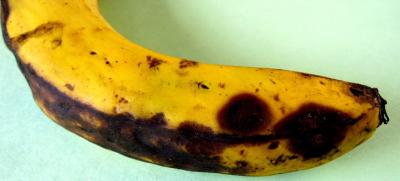
© A.A. Seif, icipe
|
Anthracnose (Colletotrichum musa) on banana. As is in most fruits, symptoms manifest during ripening of the fruits. They are round, sunken, dark brown to black in colour, and when it is damp they become covered with a mass of pink spores
|

© Courtesy EcoPort (http://www.ecoport.org): Jürgen Kranz
|
Anthracnose (Colletotrichum gossypii) on cotton boll
|
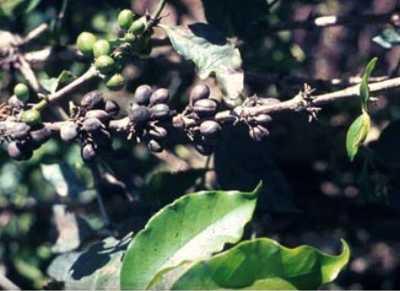
© Courtesy EcoPort (http://www.ecoport.org): Jürgen Kranz
|
Anthracnose (Colletotrichum coffeanum) on coffee (Coffea arabica) plant. Branch with mummified berries.
|

© Courtesy EcoPort (http://www.ecoport.org): Jürgen Kranz
|
Anthracnose (Colletotrichum capsici) on sweet pepper (Capsicum annuum)
|
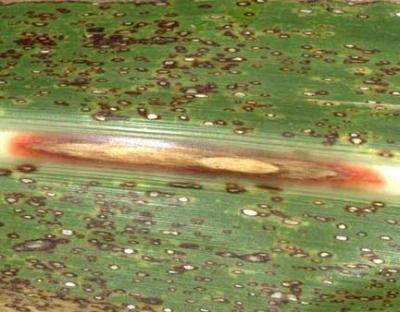
© Courtesy EcoPort (http://www.ecoport.org): Land Care Ltd. New Zealand
|
Anthracnose on sugarcane
. (Glomerella tucumanensis It produces tiny reddish lesions (2-3 mm long and about 0.5 mm wide) on the upper surface of the lamina and their abundance gives it a rusty-brown appearance. In the mid-rib, lesions usually start as minute red spots on the upper surface and develop in both directions, forming small, long lesions. The spots are red to begin with, but later become straw coloured with dark reddish-brown margins.
|
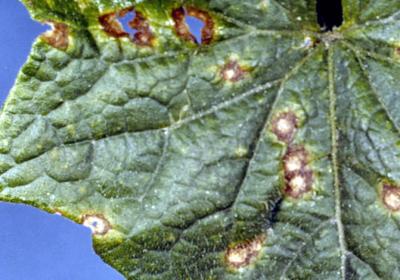
© Clemson University - USDA Cooperative Extension Slide Series, www.insectimages.org
|
Anthracnose (Colletotrichum orbiculare) damage to pumpkin leaf (Cucumis sativus).
|

© Courtesy EcoPort (http://www.ecoport.org): J.A. Frowd
|
Anthracnose on sorghum. Typical anthracnose symptoms are circular-elliptical dark spots, sometimes with a red pigmentation, which vary in size from 2 mm to more than 2 cm. The centre of mature lesions is straw-coloured and contains numerous fungal fruiting bodies (acervuli). Under humid conditions, on the spots , grey-cream-salmon-coloured spore masses are produced.
|

© Courtesy EcoPort (http://www.ecoport.org): Grahame Jackson
|
Anthracnose (Glomerella cingulata) on yam (Dioscorea alata). On cotyledons and leaves, lesions are often dark, necrotic, angular or irregular in shape. They may be pale with less necrosis. A more general spreading necrosis turning to leaf blight may also occur.
|

© Clemson University - USDA Cooperative Extension Slide Series, Bugwood.org
|
Anthracnose on soybean. (Colletotrichum truncatum / C. dermatium forma truncatum)
Infected tissues are covered with black fruiting bodies (conidiomata) which produce minute black spines (setae) that can be seen with the unaided eye.
|

 Back
Back